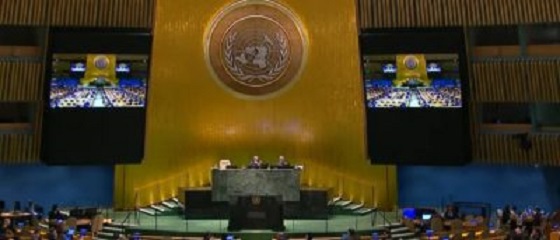Brownstone Institute
The Post-Ideological Age
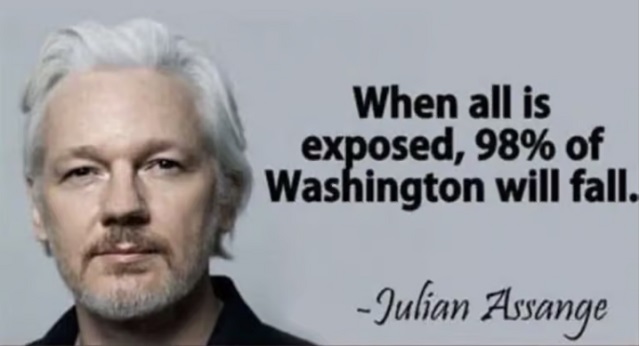
Fr0m the Brownstone Institute
By
Conventional wisdom has it that the US and much of the Western world has polarized into right and left. These tribes are hard-core and share mutual loathing. That model of understanding pervades all popular media and consumes the culture, such that everyone feels the need to choose. It’s simple, harkens back to Cold War binaries, drums up media attention, and further divides the population in ways that benefit the leaders of both sides.
The reality underneath the surface is otherwise. The old ideologies are fractured and most serious people are trying to piece together something other than the old frameworks. The turning was slow at first, probably beginning at the end of the Cold War, but culminated in the response to the Covid crisis. Despite the claim, left and right have never been more scrambled. The reassembling is also occurring right now but it looks much more like the ruling class vs everyone else.
The Covid policy response confounded every ideological outlook. For the center-left that had always trusted public health, seeing the principles of 100 years shredded in an instant was a shock. For the center-right, to see the Republicans in power acquiesce to the idea of “shutting down the economy” was truly hard to believe. The concerns of the traditional civil libertarians, including free speech, were trampled. Those who had traditionally rallied around the rights and interests of business big and small watched with horror as Big Business joined the lockdown armies and small businesses were crushed. The believers in science as a standard of truth to rise above it all were astonished to see every journal and every association compromised by state priorities.
As for nearly everyone who believed that we still lived in a representative democracy, in which elected leaders held the power, they were astonished to watch as politicians became fearful and powerless over the many layers of entrenched bureaucratic experts in government, the deepest layers of which seem to be taking charge over traditional civilian agencies. The people who had always regarded pharma as constantly foiled by the FDA watched in amazement as these vaccine-wielding powerhouses called the shots over all approval processes.
As the dissidents began to cut through the censorship that was almost immediate in the spring of 2020, we discovered a fascinating thing. Our traditional allies were not with us. I’ve heard this from the right, left, and libertarians all. Whether in academia or media, no one was speaking out in ways we might have expected. As Naomi Wolf put it in a private seminar, in words that shocked me at the time, “all our past alliances, institutions, and networks have collapsed.”
There was something about the excuse for the imposition of sudden despotism that seemed to confound all the main voices on all sides. That was a clue that something was very wrong, and it was more than betrayal. It was a sign that we had profoundly misunderstood the intellectual lay of the land.
One might have supposed that church leaders would protest the closing of houses of worship. For the most part, they did not. It was the same with old-line civil liberties organizations. They fell silent. The Libertarian Party had nothing to say and neither did most libertarian think tanks; even now the party’s standard bearer was fully in with the lockdown program when it mattered. The left fell in line and so did the right. Indeed, major “conservative” outlets weighed in on behalf of lockdowns and vaccine mandates – same as the traditional “liberal” outlets.
And what did the dissidents have in common? They were concerned with evidence, science, calm, and traditional law and liberty. Crucially, they were in a career position to say something about the problem. That is to say, most of the dissidents were not in a position of dependency on the major systems of power and influence, whether in the nonprofit world, academia, Big Media and Tech, and otherwise. They spoke out because they cared and because they were in a position to do so.
Gradually over the months and years, we have found each other. And what have we found? We’ve discovered that people who were seemingly on different sides solely due to branding of the past had far more in common than we thought.
And as a result, and partly because we were now in a position to trust each other more than we might otherwise, we began to listen to each other. More importantly, we have begun to learn from each other, discovering all the ways in which our previous tribal connections had blinded us to realities that we had right before us the whole time but we simply could not see.
As an example, many on the left who had long defended the rise of government power as a check on the depredations of private business were amazed to see these very powers turned against the classes of people whose interests they had long defended, namely the poor and working classes. If nothing else, the pandemic response was a prime example of class exploitation of the people on behalf of the economic, cultural, and political elites.
Conversely, those of us who had long championed the rights of business were forced to look squarely at the reality that the largest corporations, heavily consolidated after decades of loose credit, were working so closely with government as if there really was no difference between the public and private sector. Indeed it was hard to tell the difference.
Those who had long championed the rights of media against elite attacks discovered that there really was very little difference between mainstream corporate media and government public relations departments, who in turn were carrying water for the most powerful corporations that stood to gain trillions from the whole caper.
Watching all this unfold in real time was an astonishing experience. Above all else, it was intellectually disorienting. And so those of us who care about holding an accurate understanding of the world had to regroup, draw on what we knew to be true which was confirmed but rethinking postulates and dogmas we assumed to be true but which turned out to be false in the emergency.
Yes, these days have ended, at least for now, but they leave a vast carnage of old ideological systems in the dustbin of history. Part of the job of Brownstone Institute, and perhaps even our main job, is to figure out the operations of the world in a realistic way, backed by evidence and the best theory, toward finding our way back to the fundamental principles that have built civilization over the centuries. That goal is inseparable from the very idea of rights, and public institutions that are responsive to the people.
What we have learned is that our ideological system not only didn’t protect us; they could not even fully explain the strange realities that unfolded.
Everyone in the dissident community agrees fully with the main theme of The Lord of the Rings: power is the great killer of the human spirit. Our job is to figure out who has that power, how to dismantle it, and the right path to preventing something like this from ever happening again. And by “something like this,” we mean everything: the exploitation, the restrictions on peaceful behavior, the agency capture and corporate aggression, the censorship and betrayal of the promise of the information age, the crushing of property rights and enterprise, and the violation of bodily autonomy.
In our quieter moments, all of us are wondering how we could have been so confused about the ideological bifurcations of the past. Why were we so entrenched in them? And to what extent did those ideologies create an artificial veneer over the growing problems underneath the binary overlay? This was surely the case and it went on for decades.
We think back now on populist movements of the past and see how many of them, whether ostensibly from the right or left, ultimately came from the same place, the perception that the system was being run by something or someone other than is being advertised. The Occupy Wall Street movement ultimately came from the same instincts as the Truckers Revolt in Canada that came some twelve years later, and yet one is called left and one is called right.
It is impossible to separate the BLM protests and sometimes riots from reaction against being locked up for the better part of two months from a virus that was known to be a threat mainly to the aged and infirm. That unleashed predictable anger that was often deeply destructive. And the shock and outrage at the vaccine and mask mandates stemmed from the same basic impulse: the human desire not to live in cages of someone else’s creation but rather be in charge of our own bodies and lives.
It’s the same with the anti-censorship movements today, and the growing nationalist movements around the world that wonder whether or not nation-states even have authority anymore to control the massive and hegemonic global forces that seem to be pulling the strings behind the scenes.
All these shifts in the firmament of opinion and politics come from the same place: the desire to take back control of our lives.
This means many things. It includes causes that many on the right have neglected: food freedom, medical freedom, corporate consolidation, the rise of the corporate state, private-sector censorship pushed by agency outsourcing, the militarization of civilian agencies, and deep-state power. And the same is true for the honest left, newly aware of the corruption of government, the rights of religious freedom and free enterprise, the evils of central banking and financial surveillance, and far more.
Looking back, much more makes sense. Consider the domestic discontent in the US that culminated in the implausible election of Donald Trump in 2016, an event that confounded the elite classes in media, government, tech, and pharma. Trump stood in symbolic opposition to it all and took some minor steps toward rolling back the empire at home and abroad. He was joined in this effort by political trends in the UK (with Brexit) and Brazil (with the rise of Bolsonaro). A new flavor of populism seemed to be on the rise.
There were many attempts to crush it here and abroad, starting far back but intensifying after 2016. The culminating moment was the Covid regime which was global in scope and involved a “whole of society” approach as if to say: we and not you are in charge. Look what we can achieve! Observe how little you really matter in the scheme of things! You thought the system worked for you but it is designed and run by us!
Is this sustainable? It is highly doubtful, at least not in the long term. What is desperately needed now is a paradigm of understanding that transcends the tribal alliances of the past. It really is the ruling elite vs. everyone else, an outlook that blows apart ideological divisions of the past and cries out for a new comprehension of the present moment, not to mention new plans of action. And this remains true regardless of the outcome of the election in November.
In the language of Thomas Kuhn, our times have seen the decisive collapse of old paradigms. They have fallen under the weight of too many anomalies. We have already entered into the pre-paradigmatic stage that seeks a new and more evidence-based orthodoxy of understanding. The only way we can get there is to enter into and enjoy the clash of ideas, in a spirit of freedom and learning. If nothing else, these are exciting times to be alive and active, an opportunity for all of us to make a difference for the future.
If you are interested in supporting the work of Brownstone Institute – the fellowships, events, books, retreats, and ongoing journalism and research – we invite you to do so. Unlike so many others, we have no government or corporate backing and depend entirely on your willingness to help. This is how we save intellectual integrity and how we save the world.
Brownstone Institute
Trump Covets the Nobel Peace Prize
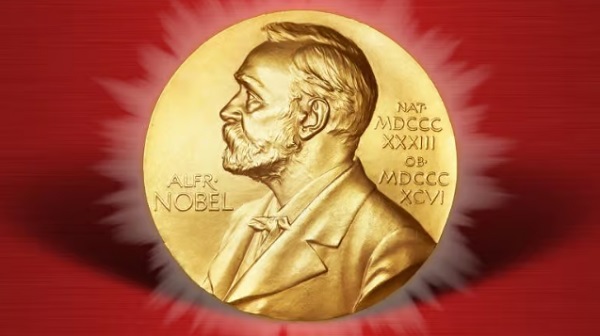
From the Brownstone Institute
By
Many news outlets reported the announcement of the Nobel Peace Prize on Friday by saying President Donald Trump had missed out (Washington Post, Yahoo, Hindustan Times, Huffington Post), not won (USA Today), fallen short (AP News), lost (Time), etc. There is even a meme doing the rounds about ‘Trump Wine.’ ‘Made from sour grapes,’ the label explains, ‘This is a full bodied and bitter vintage guaranteed to leave a nasty taste in your mouth for years.’

For the record, the prize was awarded to María Corina Machado for her courageous and sustained opposition to Venezuela’s ruling regime. Trump called to congratulate her. Given his own attacks on the Venezuelan president, his anger will be partly mollified, and he could even back her with practical support. He nonetheless attacked the prize committee, and the White House assailed it for putting politics before peace.
He could be in serious contention next year. If his Gaza peace plan is implemented and holds until next October, he should get it. That he is unlikely to do so is more a reflection on the award and less on Trump.
So He Won the Nobel Peace Prize. Meh!
Alfred Nobel’s will stipulates the prize should be awarded to the person who has contributed the most to promote ‘fraternity between nations…abolition or reduction of standing armies and…holding and promotion of peace congresses.’ Over the decades, this has expanded progressively to embrace human rights, political dissent, environmentalism, race, gender, and other social justice causes.
On these grounds, I would have thought the Covid resistance should have been a winner. The emphasis has shifted from outcomes and actual work to advocacy. In honouring President Barack Obama in 2009, the Nobel committee embarrassed itself, patronised him, and demeaned the prize. His biggest accomplishment was the choice of his predecessor as president: the prize was a one-finger send-off to President George W. Bush.
There have been other strange laureates, including those prone to wage war (Henry Kissinger, 1973), tainted through association with terrorism (Yasser Arafat, 1994), and contributions to fields beyond peace, such as planting millions of trees. Some laureates were subsequently discovered to have embellished their record, and others proved to be flawed champions of human rights who had won them the treasured accolade.
Conversely, Mahatma Gandhi did not get the prize, not for his contributions to the theory and practice of non-violence, nor for his role in toppling the British Raj as the curtain raiser to worldwide decolonisation. The sad reality is how little practical difference the prize has made to the causes it espoused. They bring baubles and honour to the laureates, but the prize has lost much of its lustre as far as results go.
Trump Was Not a Serious Contender
The nomination processes start in September and nominations close on 31 January. The five-member Norwegian Nobel committee scrutinises the list of candidates and whittles it down between February and October. The prize is announced on or close to 10 October, the date Alfred Nobel died, and the award ceremony is held in Oslo in early December.
The calendar rules out a newly elected president in his first year, with the risible exception of Obama. The period under review was 2024. Trump’s claims to have ended seven wars and boasts of ‘nobody’s ever done that’ are not taken seriously beyond the narrow circle of fervent devotees, sycophantic courtiers, and supplicant foreign leaders eager to ingratiate themselves with over-the-top flattery.
Trump Could Be in Serious Contention Next Year
Trump’s 20-point Gaza peace plan falls into three conceptual-cum-chronological parts: today, tomorrow, and the day after. At the time of writing, in a hinge moment in the two-year war, Israel has implemented a ceasefire in Gaza, Hamas has agreed to release Israeli hostages on 13-14 October, and Israel will release around 2,000 Palestinian prisoners (today’s agenda). So why are the ‘Ceasefire Now!’ mobs not out on the streets celebrating joyously instead of looking morose and discombobulated? Perhaps they’ve been robbed of the meaning of life?
The second part (tomorrow) requires Hamas demilitarisation, surrender, amnesty, no role in Gaza’s future governance, resumption of aid deliveries, Israeli military pullbacks, a temporary international stabilisation force, and a technocratic transitional administration. The third part, the agenda for the day after, calls for the deradicalisation of Gaza, its reconstruction and development, an international Peace Board to oversee implementation of the plan, governance reforms of the Palestinian Authority, and, over the horizon, Palestinian statehood.
There are too many potential pitfalls to rest easy on the prospects for success. Will Hamas commit military and political suicide? How can the call for democracy in Gaza and the West Bank be reconciled with Hamas as the most popular group among Palestinians? Can Israel’s fractious governing coalition survive?
Both Hamas and Israel have a long record of agreeing to demands under pressure but sabotaging their implementation at points of vulnerability. The broad Arab support could weaken as difficulties arise. The presence of the internationally toxic Tony Blair on the Peace Board could derail the project. Hamas has reportedly called on all factions to reject Blair’s involvement. Hamas official Basem Naim, while thanking Trump for his positive role in the peace deal, explained that ‘Palestinians, Arabs and Muslims and maybe a lot [of] people around the world still remember his [Blair’s] role in causing the killing of thousands or millions of innocent civilians in Afghanistan and Iraq.’
It would be a stupendous achievement for all the complicated moving parts to come together in stable equilibrium. What cannot and should not be denied is the breathtaking diplomatic coup already achieved. Only Trump could have pulled this off.
The very traits that are so offputting in one context helped him to get here: narcissism; bullying and impatience; bull in a china shop style of diplomacy; indifference to what others think; dislike of wars and love of real estate development; bottomless faith in his own vision, negotiating skills, and ability to read others; personal relationships with key players in the region; and credibility as both the ultimate guarantor of Israel’s security and preparedness to use force if obstructed. Israelis trust him; Hamas and Iran fear him.
The combined Israeli-US attacks to degrade Iran’s nuclear capability underlined the credibility of threats of force against recalcitrant opponents. Unilateral Israeli strikes on Hamas leaders in Qatar highlighted to uninvolved Arabs the very real dangers of continued escalation amidst the grim Israeli determination to rid themselves of Hamas once and for all.
Trump Is Likely to Be Overlooked
Russia has sometimes been the object of the Nobel Peace Prize. The mischievous President Vladimir Putin has suggested Trump may be too good for the prize. Trump’s disdain for and hostility to international institutions and assaults on the pillars of the liberal international order would have rubbed Norwegians, among the world’s strongest supporters of rules-based international governance, net zero, and foreign aid, the wrong way.
Brash and public lobbying for the prize, like calling the Norwegian prime minister, is counterproductive. The committee is fiercely independent. Nominees are advised against making the nomination public, let alone orchestrating an advocacy campaign. Yet, one laureate is believed to have mobilised his entire government for quiet lobbying behind the scenes, and another to have bad-mouthed a leading rival to friendly journalists.
Most crucially, given that Scandinavian character traits tip towards the opposite end of the scale, it’s hard to see the committee overlooking Trump’s loud flaws, vanity, braggadocio, and lack of grace and humility. Trump supporters discount his character traits and take his policies and results seriously. Haters cannot get over the flaws to seriously evaluate policies and outcomes. No prizes for guessing which group the Nobel committee is likely to belong to. As is currently fashionable to say when cancelling someone, Trump’s values do not align with those of the committee and the ideals of the prize.
Autism
Trump Blows Open Autism Debate
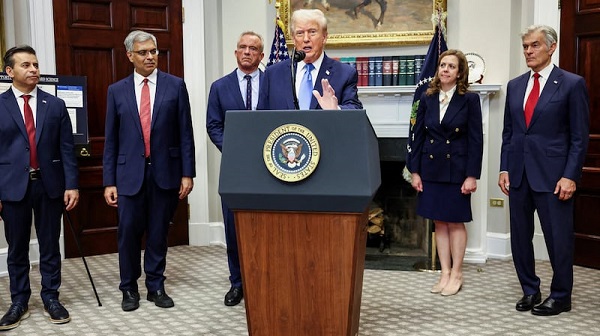
From the Brownstone Institute
By
Trump made sweeping claims that would have ended political careers in any other era. His health officials tried to narrow the edges, but the President ensured that the headlines would be his.
Autism has long been the untouchable subject in American politics. For decades, federal agencies tiptoed around it, steering research toward genetics while carefully avoiding controversial environmental or pharmaceutical questions.
That ended at the White House this week, when President Donald Trump tore through the taboo with a blunt and sometimes incendiary performance that left even his own health chiefs scrambling to keep pace.
Flanked by Health Secretary Robert F. Kennedy, Jr., NIH Director Jay Bhattacharya, FDA Commissioner Marty Makary, CMS Adminstrator Dr Mehmet Oz, and other senior officials, Trump declared autism a “horrible, horrible crisis” and recounted its rise in startling terms.
“Just a few decades ago, one in 10,000 children had autism…now it’s one in 31, but in some areas, it’s much worse than that, if you can believe it, one in 31 and…for boys, it’s one in 12 in California,” Trump said.
The President insisted the trend was “artificially induced,” adding: “You don’t go from one in 20,000 to one in 10,000 and then you go to 12, you know, there’s something artificial. They’re taking something.”
Trump’s Blunt Tylenol Warning
The headline moment came when Trump zeroed in on acetaminophen, the common painkiller sold as Tylenol — known as paracetamol in Australia.
While Kennedy and Makary described a cautious process of label changes and physician advisories, Trump dispensed with nuance.
“Don’t take Tylenol,” Trump said flatly. “Don’t take it unless it’s absolutely necessary…fight like hell not to take it.”
Kennedy laid out the evidence base, citing “clinical and laboratory studies that suggest a potential association between acetaminophen used during pregnancy and adverse neurodevelopmental outcomes, including later diagnosis for ADHD and autism.”
Makary reinforced the point with references to the Boston Birth Cohort, the Nurses’ Health Study, and a recent Harvard review, before adding: “To quote the dean of the Harvard School of Public Health, there is a causal relationship between prenatal acetaminophen use and neurodevelopmental disorders of ADHD and autism spectrum disorder. We cannot wait any longer.”
But where the officials spoke of “lowest effective dose” and “shortest possible duration,” Trump thundered over the top: “I just want to say it like it is, don’t take Tylenol. Don’t take it if you just can’t. I mean, it says, fight like hell not to take it.”
Vaccines Back on Center Stage
The President then pivoted to vaccines, reviving arguments that the medical establishment has long sought to bury. He blasted the practice of giving infants multiple injections at a single visit.
“They pump so much stuff into those beautiful little babies, it’s a disgrace…you get a vat of 80 different vaccines, I guess, 80 different blends, and they pump it in,” Trump said.
His solution was simple: “Go to the doctor four times instead of once, or five times instead of once…it can only help.”
On the measles, mumps, and rubella shot, Trump insisted: “The MMR, I think should be taken separately…when you mix them, there could be a problem. So there’s no downside in taking them separately.”
The moment was astonishing — echoing arguments that had once seen doctors like Andrew Wakefield excommunicated from medical circles.
It was the kind of line of questioning the establishment had spent decades trying to banish from mainstream debate.
Hep B Vaccine under Attack
Trump dismissed the rationale for giving the hepatitis B vaccine at birth.
“Hepatitis B is sexually transmitted. There’s no reason to give a baby that’s just born hepatitis B [vaccine]. So I would say, wait till the baby is 12 years old,” he said.
He made clear that he was “not a doctor,” stressing that he was simply offering his personal opinion. But the move could also be interpreted as Trump choosing to take the heat himself, to shield Kennedy’s HHS from what was sure to be an onslaught of criticism.
The timing was remarkable.
Only last week, the CDC’s Advisory Committee on Immunisation Practices (ACIP) had been preparing to vote on whether to delay the hepatitis B shot until “one month” of age — a modest proposal that mainstream outlets derided as “anti-vax extremism.”
By contrast, Trump told the nation to push the jab back 12 years. His sweeping denunciations made the supposedly radical ACIP vote look almost tame.
The irony was inescapable — the same media voices who had painted Kennedy’s reshaped ACIP as reckless now faced a President willing to say far more than the panel itself dared.
A New Treatment and Big Research Push
The administration also unveiled what it deemed a breakthrough: FDA recognition of prescription leucovorin, a folate-based therapy, as a treatment for some autistic children.
Makary explained: “It may also be due to an autoimmune reaction to a folate receptor on the brain not allowing that important vitamin to get into the brain cells…one study found that with kids with autism and chronic folate deficiency, two-thirds of kids with autism symptoms had improvement and some marked improvement.”
Dr Oz confirmed Medicaid and CHIP (the Children’s Health Insurance Program, which provides low-cost health coverage to children in families that earn too much to qualify for Medicaid) would cover the treatment.
“Over half of American children are covered by Medicaid and CHIP…upon this label change…state Medicaid programs will cover prescription leucovorin around the country, it’s yours,” said Oz.
Bhattacharya announced $50 million in new NIH grants under the “Autism Data Science Initiative.”
He explained that 13 projects would be funded using “exposomics” — the study of how environmental exposures like diet, chemicals, and infections interact with our biology — alongside advanced causal inference methods.
“For too long, it’s been taboo to ask some questions for fear the scientific work might reveal a politically incorrect answer,” Bhattacharya said. “Because of this restricted focus in scientific investigations, the answers for families have been similarly restricted.”
Mothers’ Voices
The press conference also featured raw testimony from parents.
Amanda, mother of a profoundly autistic five-year-old, told Trump: “Unless you’ve lived with profound autism, you have no idea…it’s a very hopeless feeling. It’s very isolating. Being a parent with a profound autistic child, even just taking them over to your friend’s house is something we just don’t do.”
Jackie, mother of 11-year-old Eddie, said: “I’ve been praying for this day for nine years, and I’m so thankful to God for bringing the administration into our lives…I never thought we would have an administration that was courageous enough to look into things that no prior administration had.”
Their stories underscored what Kennedy said at the announcement about “believing women.” Here were mothers speaking directly about their lived reality, demanding that uncomfortable conversations could no longer be avoided.
Clashes with the Press Corps
Reporters pressed Trump on the backlash from medical groups.
Asked about the American College of Obstetricians and Gynecologists (ACOG) declaring acetaminophen safe in pregnancy, Trump shot back, “That’s the establishment. They’re funded by lots of different groups. And you know what? Maybe they’re right. I don’t think they are, because I don’t think the facts bear it out at all.”
When one journalist raised the argument that rising diagnoses reflected better recognition, Kennedy bristled,
“That’s one of the canards that has been promoted by the industry for many years,” he said. “It’s just common sense, because you’re only seeing this in people who are under 50 years of age. If it were better recognition or diagnosis, you’d see it in the seventy-year-old men. I’ve never seen this happening in people my age.”
Another reporter then asked Trump, “Should the establishment media show at least some openness to trying to figure out what the causes are?”
“I wish they would. Yeah, why are they so close-minded?” Trump replied. “It’s not only the media, in all fairness, it’s some people, when you talk about vaccines, it’s crazy…I don’t care about being attacked.”
Breaking the Spell
For years, autism policy has been shaped by caution, consensus, and deference to orthodox positions. That spell was broken at today’s press conference.
The dynamic was striking. Kennedy, Makary, Bhattacharya, and Oz leaned on scientific papers, review processes, and cautious advisories. Trump, by contrast, brushed it all aside, hammering his message home through repetition and personal anecdotes.
Trump made sweeping claims that would have ended political careers in any other era. His health officials tried to narrow the edges, but the President ensured that the headlines would be his.
“This will be as important as any single thing I’ve done,” Trump declared. “We’re going to save a lot of children from a tough life, really tough life. We’re going to save a lot of parents from a tough life.”
Whatever the science ultimately shows, the politics of autism in America will never be the same.
Republished from the author’s Substack
-

 International2 days ago
International2 days agoPoland’s president signs new zero income tax law for parents with two children
-

 Business1 day ago
Business1 day agoFord’s Whisky War
-

 International2 days ago
International2 days agoAustralian territory bans men from women’s prisons in national first
-
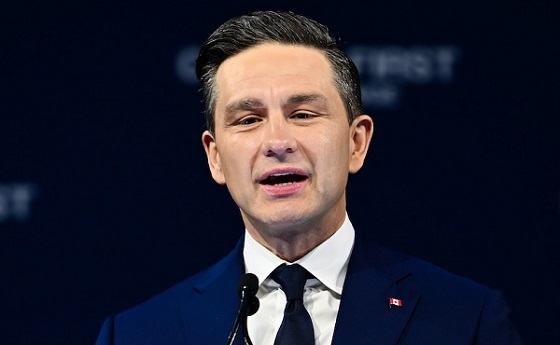
 National2 days ago
National2 days agoPoilievre accuses Canada’s top police force of ‘covering up’ alleged Trudeau crimes
-

 Agriculture10 hours ago
Agriculture10 hours agoIs the CFIA a Rogue Agency or Just Taking Orders from a Rogue Federal Government?
-
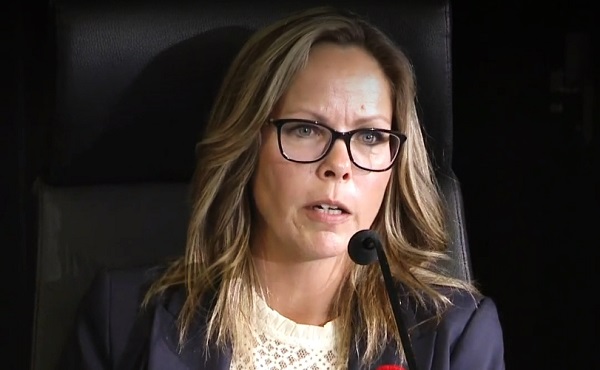
 COVID-192 days ago
COVID-192 days agoFreedom Convoy leader Tamara Lich says ‘I am not to leave the house’ while serving sentence
-
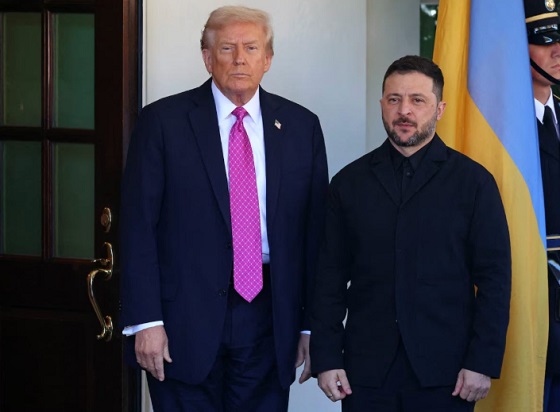
 Focal Points1 day ago
Focal Points1 day agoTrump Walks Back His Tomahawk Tease from Zelensky
-

 Automotive1 day ago
Automotive1 day ago$15 Billion, Zero Assurances: Stellantis Abandons Brampton as Trudeau-Era Green Deal Collapses








